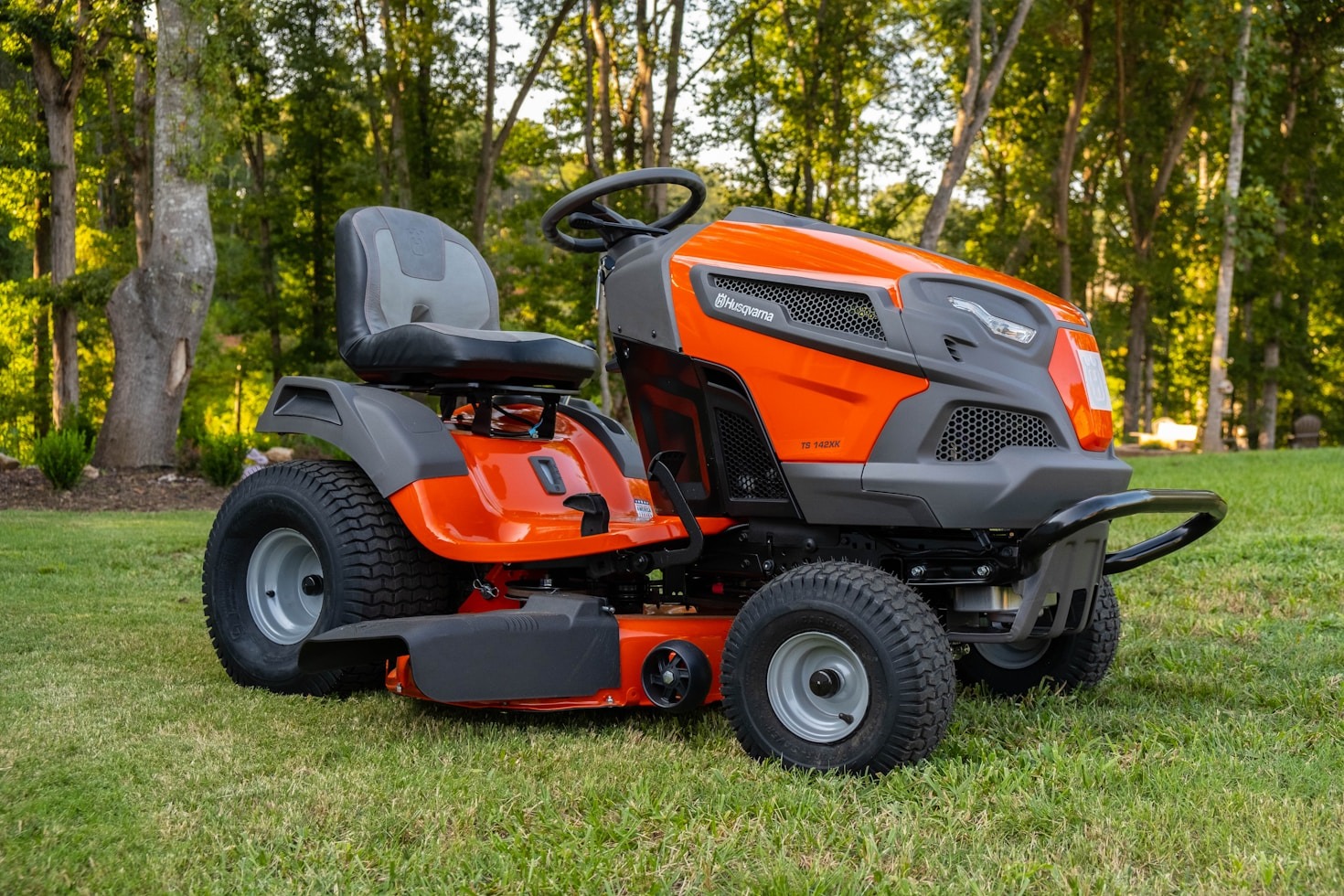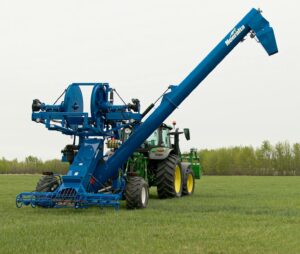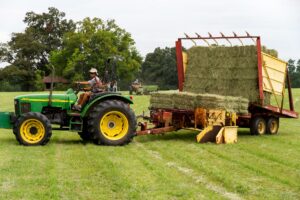Tractors have long been a symbol of agricultural progress, revolutionizing farming practices by improving efficiency and productivity. From small hobby farms to sprawling commercial operations, tractors are indispensable tools that simplify various tasks. However, for those new to farming or machinery, understanding tractor technology can seem overwhelming. In this beginner’s guide, we’ll break down the essential components, types, and advancements in tractor technology to help you get started.
The Basics of Tractors
At its core, a tractor is a vehicle specifically designed to deliver high torque at low speeds. This makes it ideal for pulling heavy loads and powering various attachments like plows, mowers, and seed drills. While early tractors were simple machines, today’s models incorporate advanced technology for increased functionality and ease of use.
Key Components of a Tractor
- Engine The heart of any tractor is its engine, typically a diesel-powered unit designed to provide robust and reliable performance. Modern engines are equipped with features like turbochargers, electronic fuel injection, and emission control systems to enhance efficiency and reduce environmental impact.
- Transmission Tractors use specialized transmissions to regulate speed and power. Options include manual, hydrostatic, and continuously variable transmissions (CVT), each catering to different user needs and tasks.
- Hydraulics Hydraulic systems are essential for operating attachments and implements. They control lifting, lowering, and adjusting angles, making the tractor versatile for various applications.
- Power Take-Off (PTO) The PTO is a critical feature that allows the tractor to power attached implements like mowers, balers, and sprayers. It connects directly to the engine, ensuring efficient transfer of energy.
- Chassis and Tires A tractor’s robust chassis provides the strength needed to handle heavy workloads. Tires come in various types—such as agricultural, industrial, and turf—tailored to specific tasks and terrains.
More to know – 14 Top Tractor Maintenance Tips Every Owner Should Know
Types of Tractor Technology
Understanding the different types of tractors is vital for selecting the right one for your needs. Here’s a rundown of the most common categories:
- Utility Tractors These versatile machines are perfect for general-purpose tasks such as plowing, hauling, and mowing. They are ideal for medium-sized farms and come with a range of horsepower options.
- Compact Tractors Compact tractors are smaller and designed for tasks on small farms, gardens, and estates. They are highly maneuverable and work well in tight spaces.
- Row Crop Tractors Designed specifically for planting and cultivating crops in rows, these tractors feature adjustable wheel spacing and high ground clearance.
- Specialty Tractors These include orchard tractors (designed for narrow rows of trees), vineyard tractors, and tractors built for hilly or mountainous terrains.
- Articulated Tractors Articulated tractors are large, powerful machines used for heavy-duty tasks like tillage on large commercial farms. Their unique design allows them to pivot in the middle, improving maneuverability.
Modern Advancements in Tractor Technology
Tractor technology has evolved significantly in recent years, incorporating features that improve efficiency, safety, and ease of operation. Here are some noteworthy advancements:
1. GPS and Precision Farming
Global Positioning System (GPS) technology has revolutionized modern agriculture. Tractors equipped with GPS systems can perform tasks like planting, fertilizing, and harvesting with pinpoint accuracy. Precision farming minimizes waste and maximizes yield by ensuring every inch of a field is utilized optimally.
2. Autonomous Tractors
Autonomous or driverless tractors are no longer just a concept. These machines use sensors, cameras, and artificial intelligence to navigate fields and perform tasks without human intervention. While still in their early stages of adoption, autonomous tractors promise to reduce labor costs and increase efficiency.
3. Telematics
Telematics systems allow farmers to monitor tractor performance remotely. From fuel consumption to engine health, telematics provides real-time data to optimize operations and reduce downtime.
4. Advanced Engine Technology
Modern tractors incorporate eco-friendly engines that comply with stringent emission standards. Features like selective catalytic reduction (SCR) and diesel particulate filters (DPF) help reduce environmental impact while maintaining performance.
5. Enhanced Comfort and Ergonomics
Gone are the days of uncomfortable, noisy tractor cabs. Today’s models boast air-conditioned cabins, adjustable seating, noise reduction technology, and intuitive controls for a more comfortable working environment.
Selecting the Right Tractor
Choosing the right tractor depends on several factors, including the size of your operation, the tasks you need to perform, and your budget. Here are a few tips to guide your decision:
- Assess Your Needs Make a list of the primary tasks you’ll use the tractor for. Are you plowing fields, mowing grass, or hauling materials? The specific requirements will influence the type and size of tractor you need.
- Consider Horsepower Horsepower determines a tractor’s capability to handle heavy workloads. While small tractors with 20-50 HP are suitable for gardens and small farms, larger models with 100+ HP are necessary for commercial-scale operations.
- Evaluate Attachments Ensure the tractor is compatible with the implements and attachments you plan to use. Versatility is key to maximizing your investment.
- Think About Terrain The terrain of your farm plays a significant role in choosing a tractor. For example, four-wheel-drive models are better suited for uneven or muddy fields.
- Budget Wisely While it’s tempting to go for the most advanced model, consider your budget carefully. Factor in not only the purchase price but also maintenance, fuel, and operating costs.
Maintenance Tips for Tractor Longevity
A well-maintained tractor can last for decades. Here are some essential maintenance tips:
- Regular Inspections: Check for leaks, wear and tear, and tire pressure before every use.
- Change Fluids and Filters: Keep the engine oil, hydraulic fluid, and filters clean and fresh.
- Keep It Clean: Remove dirt, debris, and crop residue from the tractor to prevent rust and damage.
- Follow Manufacturer Guidelines: Adhere to the maintenance schedule outlined in the user manual.
- Store Properly: Protect your tractor from harsh weather by storing it in a covered space or using a quality tarp.
Conclusion
Understanding tractor technology doesn’t have to be daunting. By familiarizing yourself with the basics, exploring modern advancements, and following maintenance best practices, you can make informed decisions and maximize your tractor’s potential. Whether you’re a small-scale farmer or running a large agricultural enterprise, investing time to learn about your equipment will pay dividends in efficiency, productivity, and longevity.
Tractors are more than machines—they are the backbone of modern agriculture. With the knowledge from this guide, you’re now better equipped to harness their power and drive your farming success forward.




Pingback: Comparing Tractors: Which Model is Right for You?